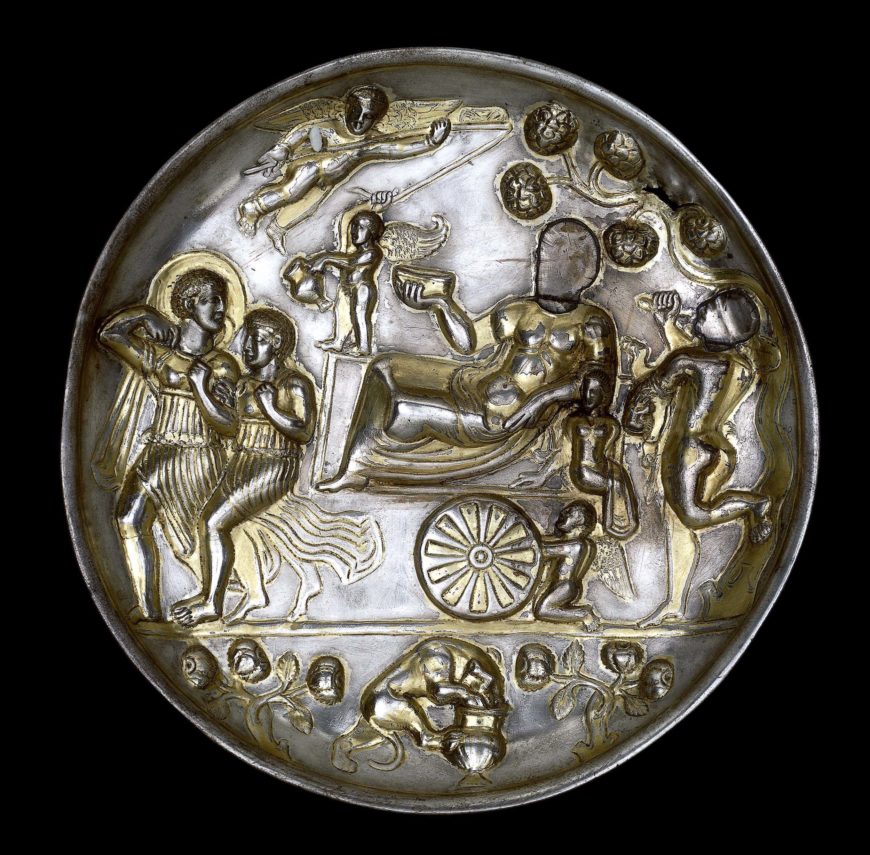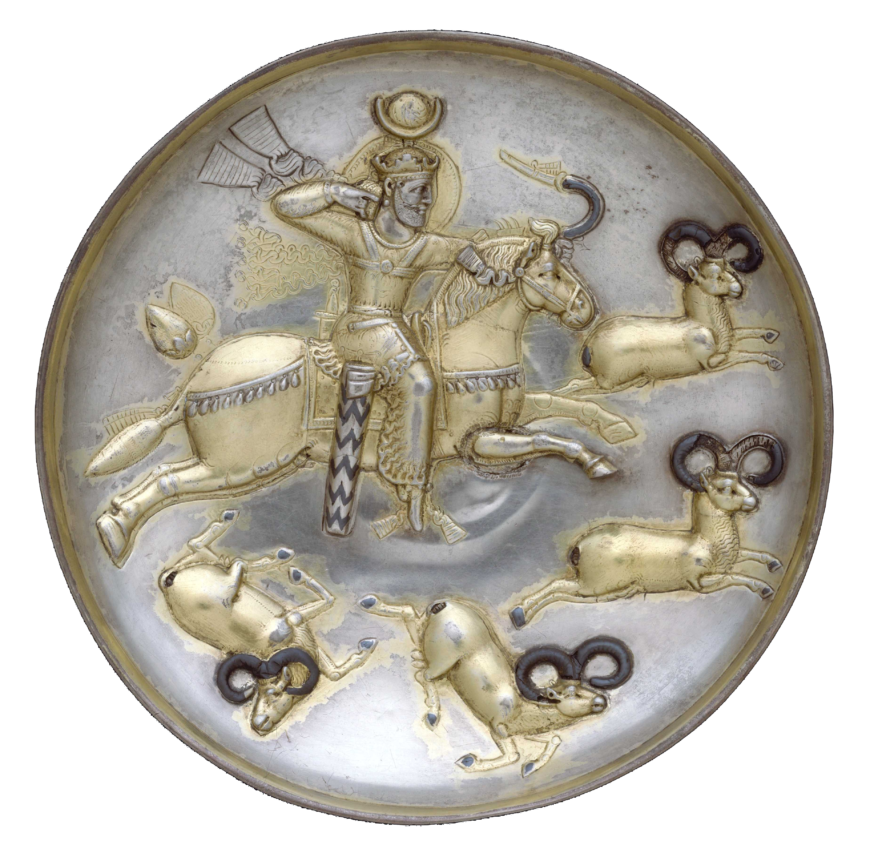
Dish, c. 100–300 C.E., Parthian/Early Sasanian, hammered silver and gold, made in Afghanistan or Iran, 22.5 cm in diameter (© Trustees of the British Museum)

Plate with a king hunting rams, Sasanian Iran, 5th–6th century C.E., silver with mercury gilding and niello inlay; 21.9 cm diameter (The Metropolitan Museum of Art)
This dish dates to the time of the Sasanian empire, and is typical of the high quality silverware that the Sasanians produced. Sophisticated techniques of figures added in relief and of partial gilding were used. The method of producing the reliefs involved cutting the figures from a thin sheet of silver, embossing them, and then soldering them to the surface of the dish.
The scene is a direct borrowing from the Classical world, where Dionysos in his chariot surrounded by revelers was frequently shown.
The beauty of such products gave Sasanian silver a widespread influence, felt as far away as China, where motifs were copied during the early Tang dynasty. Even detailed technical practices were copied and used. At the same time stylistic techniques typical of Iran and the Near East, such as frontal representation, were absorbed into the art of the Romans.
© Trustees of the British Museum


